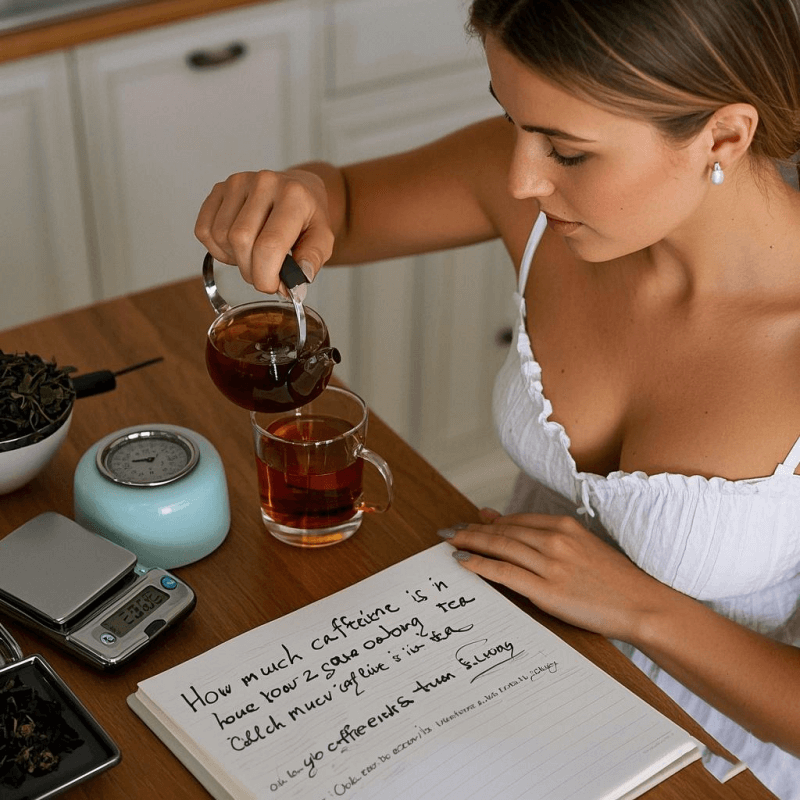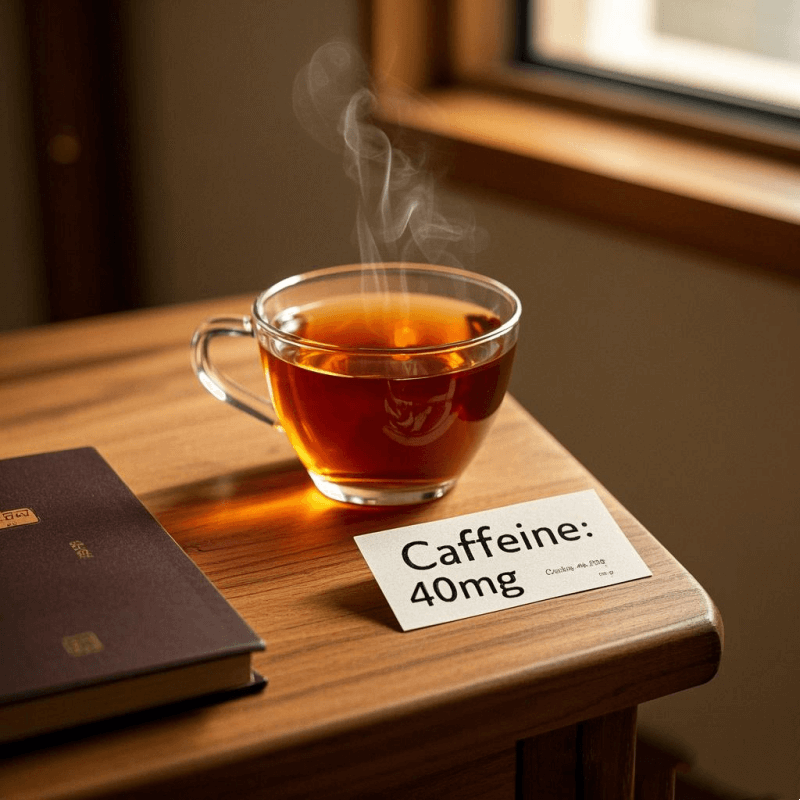
1. Introduction: Why You Should Know How Much Caffeine Is in Oolong Tea
In the diverse landscape of beverages, this semi – oxidized brew has carved out a niche for itself, captivating tea enthusiasts with its complex flavors. Yet, for health – minded individuals, grasping how much caffeine is in oolong tea is key to smart consumption. Caffeine, a natural stimulant, can energize the body but may disrupt sleep if overindulged. A recent survey by The Tea Association revealed that 65% of tea drinkers actively seek information about beverage caffeine levels. Whether you’re a regular sipper of this caffeinated delight or considering adding it to your routine, understanding its caffeine content empowers informed decisions.
The popularity of this traditional Chinese beverage stems from its rich flavor profiles and potential health benefits. However, as caffeine is a significant component, knowing how much caffeine is in oolong tea is crucial for enjoying its advantages without adverse effects. This article will explore the caffeine details of this brew, compare it with other teas, analyze its health impacts, and offer strategies for managing intake effectively.
2. What Is Oolong Tea? A Quick Overview
Oolong tea, a traditional Chinese specialty, occupies a unique middle ground on the tea oxidation spectrum. Unlike minimally oxidized green tea and fully oxidized black tea, this semi – oxidized infusion undergoes partial oxidation, typically ranging from 8% to 85%. This distinct processing endows the beverage with a wide flavor palette, from delicate floral notes to robust, toasty flavors, making it a favorite among connoisseurs.
The production of this tea is a meticulous process. Post – harvest, the leaves undergo withering, shaking to initiate oxidation, and firing to halt the process. Variables like tea plant type, growing region, and processing techniques significantly influence both the flavor and caffeine content of the final product. As [Healthline](https://www.healthline.com/nutrition/oolong – tea) notes, the diversity within this beverage means caffeine levels can vary widely among different varieties.
3. How Much Caffeine Is in Oolong Tea: Average Content and Range
On average, an 8 – ounce (240 – ml) cup of brewed oolong tea contains 30 – 50 milligrams of caffeine. However, this range can fluctuate wildly, spanning from as low as 10 milligrams to as high as 90 milligrams per cup, contingent on multiple factors. For example, infusions crafted from younger tea leaves or buds often have elevated caffeine levels, as these plant parts naturally harbor more of the stimulant.
Brewing methods also play a pivotal role in determining how much caffeine is in oolong tea. Hotter water, extended steeping times, and increased leaf quantity extract more caffeine. A study in The Journal of Tea Science showed that steeping this tea at 200°F (93°C) for 5 minutes extracted 30% more caffeine than steeping at 180°F (82°C) for 3 minutes.
The type of oolong tea also impacts caffeine content. Lightly oxidized varieties, such as Tie Guan Yin, generally have less caffeine, while heavily oxidized ones like Da Hong Pao may contain more. Recognizing these variations is vital for managing how much caffeine is in oolong tea in your daily routine.
4. Oolong Tea vs Other Teas: Caffeine Comparison
Oolong vs Green Tea
Green tea is renowned for its relatively low caffeine content. An 8 – ounce cup typically contains 20 – 45 milligrams of caffeine, slightly less than the average for this semi – oxidized brew. However, this can vary based on tea type and brewing method. The primary distinction lies in processing: green tea’s minimal oxidation preserves natural compounds, including caffeine, but in a less concentrated form than some varieties of this tea.
Oolong vs Black Tea
Black tea, being fully oxidized, usually has a higher caffeine content than this semi – oxidized beverage. A standard 8 – ounce cup of black tea can contain 40 – 70 milligrams of caffeine. The longer oxidation process in black tea breaks down more leaf compounds, releasing more caffeine during brewing. Still, some heavily oxidized oolong teas can approach black tea’s caffeine levels, underscoring the need to check specific varieties when comparing.
Oolong vs White Tea
White tea, the least processed of all teas, typically has the lowest caffeine content, with an 8 – ounce cup containing around 15 – 30 milligrams. Its gentle processing, involving minimal handling and oxidation, results in less caffeine extraction. This makes white tea an ideal choice for those seeking a milder caffeinated option compared to this semi – oxidized infusion.
5. Health Impacts of Caffeine in Oolong Tea
Positive Effects
When consumed moderately, the caffeine in this tea can confer several health benefits. As [WebMD](https://www.webmd.com/diet/features/caffeine – benefits – risks) reports, caffeine stimulates the central nervous system, enhancing alertness and reducing fatigue. This makes it an excellent mid – day pick – me – up without the jitters associated with coffee.
The combination of caffeine and other compounds in this beverage, like L – theanine, can boost cognitive function. L – theanine promotes relaxation without drowsiness, counterbalancing caffeine’s stimulating effects. Research indicates this combination may improve focus, memory, and reaction time, explaining its popularity among students and professionals.
Potential Negative Effects
Excessive consumption of this caffeinated brew or any caffeinated drink can lead to adverse effects. High caffeine intake may cause restlessness, insomnia, increased heart rate, and digestive problems. For caffeine – sensitive individuals, even moderate amounts of this tea can disrupt sleep. Being aware of how much caffeine is in oolong tea and adjusting consumption according to your body’s tolerance is essential.
6. How to Control Your Caffeine Intake While Enjoying Oolong Tea

Choose the Right Variety
Opt for lightly oxidized varieties if you prefer a lower – caffeine option. Selections like Phoenix Dan Cong or Bai Hao often contain less caffeine than their heavily oxidized counterparts. Research specific caffeine levels before buying, or discover our range of premium oolong tea with balanced caffeine levels on our official product page.
Adjust Brewing Methods
To reduce caffeine extraction, use cooler water (around 180°F or 82°C) and shorter steeping times (2 – 3 minutes). This extracts less caffeine while preserving flavor. You can also use less leaf per cup. For precise control, explore authentic brewing tools for your perfect cup of oolong tea to measure ingredients accurately.
Space Out Your Consumption
Avoid binge – drinking this tea. Instead, spread consumption throughout the day. If you’re caffeine – sensitive, limit intake to one or two cups daily, preferably in the morning or early afternoon to safeguard sleep. Enjoy a calming tea moment with our curated oolong tea collections at a pace that suits your body.
Consider Decaffeinated Options
If you love the flavor but want to minimize caffeine, try decaffeinated versions. While not completely caffeine – free, they have had a significant amount removed, allowing you to savor the taste without the stimulating effects. Learn more about oolong tea and its benefits on our official product page, including our decaffeinated selections.
7. Conclusion: Make Informed Tea Choices Based on Caffeine Content
Understanding how much caffeine is in oolong tea is essential for managing daily intake. With its diverse flavors and health benefits, this semi – oxidized brew can be a great addition to your routine, but knowing its caffeine levels is crucial. By considering factors like tea variety, brewing method, and personal sensitivity, you can enjoy this beverage responsibly.
Whether you’re a seasoned drinker or new to this tea, use this article’s insights to make informed choices. From selecting the right variety to adjusting brewing techniques, there are numerous ways to control caffeine intake while relishing the unique flavors of this semi – oxidized infusion. The next time you pour a cup, you’ll know precisely what to expect and how to enjoy it smartly.
